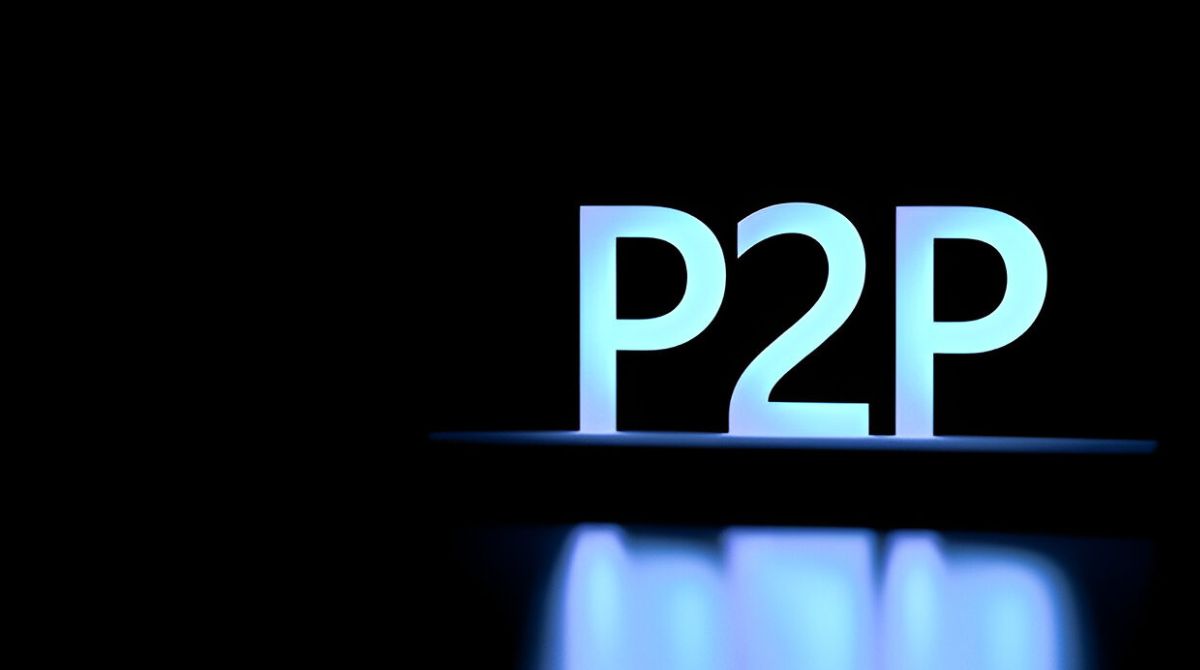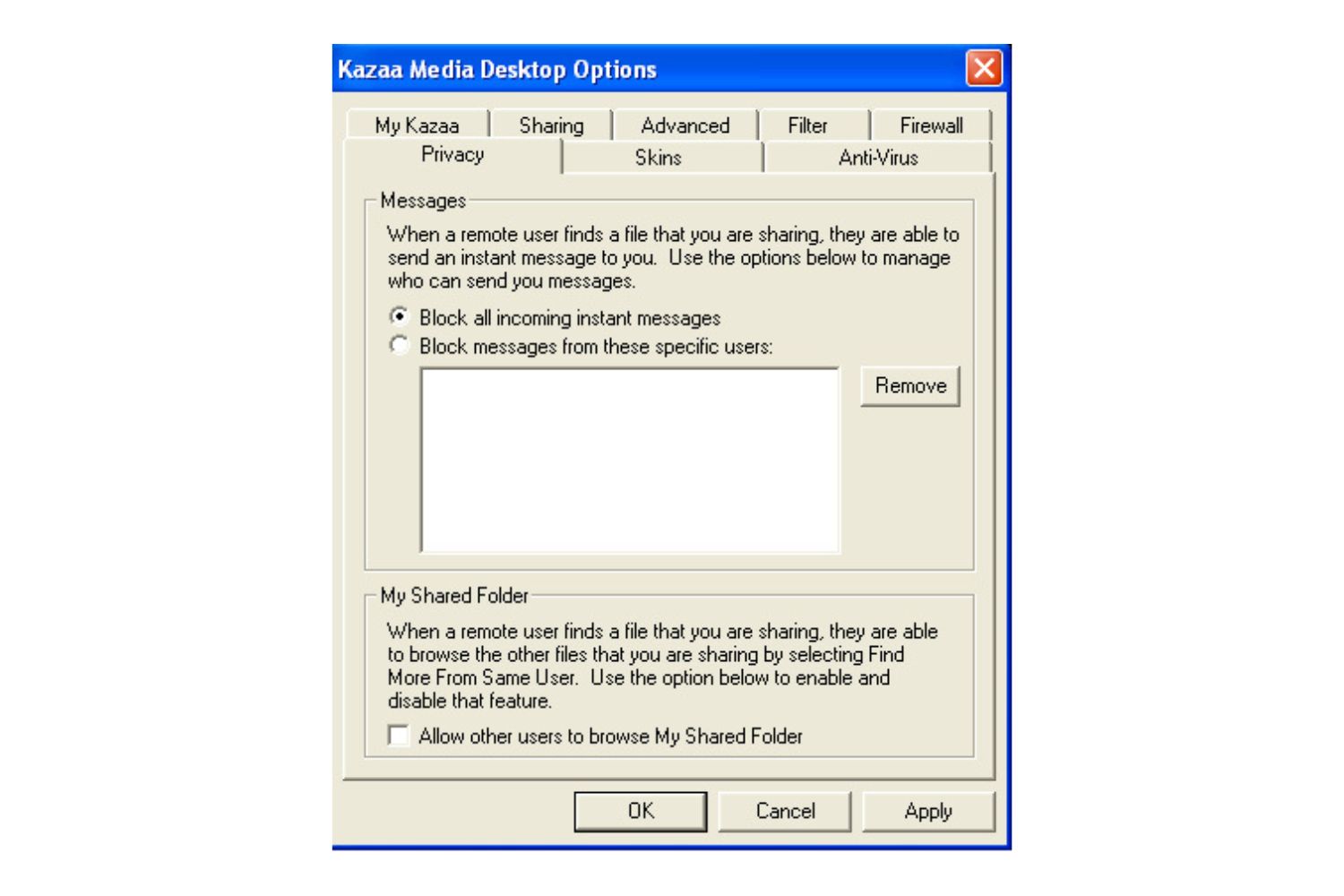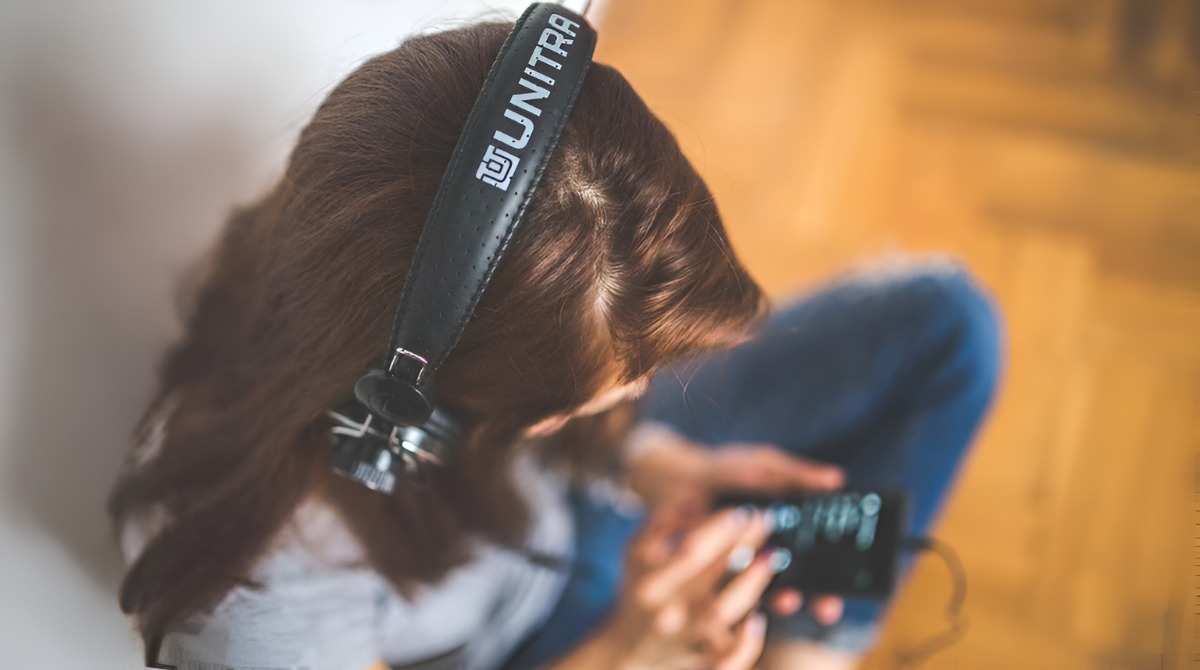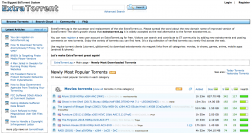Introduction
P2P (peer-to-peer) file sharing has revolutionized the way we exchange and distribute digital content online. With the rise of this technology, however, came a host of legal challenges and controversies. One of the most notable among them was the largest P2P file sharing lawsuit in history.
For years, individuals and organizations have used P2P networks to share files, whether it’s music, movies, software, or documents. These networks operate on a decentralized model, allowing users to connect directly with each other, bypassing centralized servers. This approach has its benefits, such as faster downloads and reduced bandwidth costs, but it also opens the door to potential copyright infringement.
The largest P2P file sharing lawsuit was a watershed moment in the battle between content creators and those who violate copyright laws. It shed light on the legal implications of file sharing and the consequences individuals face when engaging in such activities.
Throughout this article, we will delve into the details of this landmark case, explore the background of the defendants, examine the lawsuit’s allegations, discuss the perspectives of the media industry, analyze the defense strategies and arguments put forth, and examine the final verdict and its implications on the P2P file sharing landscape.
This case’s outcome had a significant impact not only on the individuals involved but also on the broader digital content industry. It serves as a cautionary tale for copyright infringers and shines a spotlight on the legal risks associated with P2P file sharing. Understanding this case’s intricacies and its implications is crucial to grasping the evolving nature of copyright law and its application in the digital age.
Now, let us embark on a journey to uncover the story behind the largest P2P file sharing lawsuit in history.
Brief History of P2P File Sharing
Before we dive into the details of the largest P2P file sharing lawsuit, it’s essential to understand the origins and evolution of P2P file sharing technology.
The concept of P2P file sharing dates back to the early days of the internet. In the late 1990s and early 2000s, Napster emerged as the pioneer in this field. Created by Shawn Fanning, Napster introduced a groundbreaking approach to file sharing by connecting users directly to each other’s computers.
Unfortunately, Napster’s success was short-lived, as it faced legal challenges from the music industry due to copyright infringement concerns. The Recording Industry Association of America (RIAA) accused Napster of facilitating unauthorized sharing of copyrighted music. In 2001, Napster was forced to shut down its operations.
However, the shutdown of Napster did not mark the end of P2P file sharing. Instead, it inspired the development of other decentralized file sharing protocols and platforms.
One of the most notable successors to Napster was BitTorrent. Developed by programmer Bram Cohen in 2001, BitTorrent introduced a more robust and efficient method of file sharing. Instead of relying on a central server, BitTorrent utilized a swarm of peers to distribute files. This distributed approach greatly enhanced download speeds and minimized the strain on individual users’ internet connections.
Following the rise of BitTorrent, numerous P2P file sharing networks and applications emerged, including LimeWire, eMule, Kazaa, and uTorrent. These platforms offered users a wide range of content to download, from music and movies to software and books.
As P2P file sharing gained popularity, it also attracted the attention of copyright holders and legal authorities. Content creators and media companies became increasingly concerned about the financial impact of widespread copyright infringement facilitated by P2P networks.
The legal battles and controversies surrounding P2P file sharing set the stage for the largest P2P file sharing lawsuit that we will discuss further in this article. This lawsuit not only brought the legality of P2P file sharing into question but also had far-reaching implications for the defendants, the media industry, and the future of content distribution.
Now that we have explored the brief history of P2P file sharing, we can proceed to examine the details and circumstances surrounding the largest P2P file sharing lawsuit.
The Rise of the Largest P2P File Sharing Lawsuit
As P2P file sharing networks gained popularity, so did the concerns and legal battles surrounding copyright infringement. The largest P2P file sharing lawsuit in history was an unprecedented event that had a profound impact on the individuals involved and the media industry as a whole.
The lawsuit began to unfold when several major record labels and film studios joined forces to take legal action against a group of individuals accused of rampant copyright infringement through P2P file sharing networks. The plaintiffs alleged that the defendants facilitated the illegal sharing and distribution of copyrighted music, movies, and other digital content.
The media industry saw this lawsuit as a crucial opportunity to send a strong message and deter others from engaging in similar activities. They aimed to demonstrate that copyright infringement has significant consequences and will be met with legal repercussions.
What made this lawsuit particularly significant was the scale of the alleged copyright infringement. The defendants were accused of creating and maintaining a massive P2P file sharing network that enabled millions of users to share copyrighted content freely. The sheer number of participants involved, as well as the massive amount of copyrighted material being shared, elevated this case to unprecedented levels.
Legal experts closely monitored the proceedings, considering the potential impact on copyright law and its application in the digital age. The outcome of this lawsuit had far-reaching implications that could shape the landscape of P2P file sharing and influence future legal battles.
The rise of this landmark lawsuit brought the legality of P2P file sharing into question. While some argued that P2P file sharing was a form of digital piracy that infringed upon copyright holders’ rights, others argued that it was a technological advancement that disrupted traditional content distribution models.
The battle between copyright holders and individuals engaging in P2P file sharing intensified as the case gained media attention. Public opinion on the matter was divided, reflecting the wider debate about the boundaries of intellectual property and the clash between creators’ rights and consumers’ access to content.
In the next sections, we will delve into the backgrounds of the defendants, examine the details and allegations made in the lawsuit, explore the perspectives of the media industry, and analyze the defense strategies and arguments put forth. Through this exploration, we will gain a comprehensive understanding of the largest P2P file sharing lawsuit and its impact on the digital content landscape.
Background of the Defendants
Understanding the background of the defendants is crucial to comprehending the motivations and circumstances surrounding the largest P2P file sharing lawsuit. These individuals played a central role in facilitating widespread copyright infringement through their involvement in the creation and maintenance of the P2P file sharing network.
The defendants hailed from diverse backgrounds, ranging from computer programmers and technology enthusiasts to individuals with a deep passion for digital content sharing. Their collective expertise and knowledge of P2P networking protocols allowed them to create a sophisticated and expansive file-sharing platform.
Many of the defendants were early adopters and active contributors to the P2P file sharing community. They held the belief that information and digital content should be freely accessible to all, without the constraints imposed by traditional content distribution models.
Some defendants viewed themselves as champions of digital freedom, advocating for a decentralized and unrestricted approach to sharing knowledge and creativity. They utilized their technical skills to develop and refine the P2P file sharing software, enabling millions of users worldwide to connect and share files.
However, their actions also caught the attention of copyright holders, who believed that their activities infringed upon their intellectual property rights. The defendants’ creation and operation of the P2P file sharing network provided an avenue for the widespread distribution of copyrighted music, movies, and other digital content without authorization.
The defendants’ backgrounds varied, with individuals coming from different countries, age groups, and educational backgrounds. Some were students or recent graduates with a deep interest in computer science, while others were seasoned tech professionals with a wealth of programming knowledge.
While the defendants’ intentions may have been rooted in a desire for openness and accessibility, their actions inadvertently fueled the ongoing debate about copyright infringement and its implications for content creators. Their case became a focal point in the battle between those advocating for free and open sharing of digital content and those seeking to protect intellectual property rights.
As we continue to explore the largest P2P file sharing lawsuit, it is crucial to consider the motivations, beliefs, and backgrounds of the defendants. By doing so, we gain a better understanding of the complexities and nuances of this case and the implications it has on the wider discourse surrounding copyright infringement.
Lawsuit Details and Allegations
The largest P2P file sharing lawsuit was characterized by its extensive scope and the significant allegations made against the defendants. The plaintiffs, representing major record labels and film studios, sought to hold the defendants accountable for the massive copyright infringement facilitated through their P2P file sharing network.
The lawsuit alleged that the defendants were directly involved in the creation, operation, and maintenance of a sprawling P2P file sharing network. This network enabled millions of users to share copyrighted music, movies, and other digital content without authorization from the copyright holders.
The plaintiffs argued that the defendants deliberately designed their P2P file sharing software to prioritize the sharing of copyrighted material, making it easily accessible and downloadable. They claimed that the defendants’ actions resulted in substantial financial losses for the content creators and copyright owners.
Furthermore, the allegations placed a spotlight on the defendants’ knowledge and awareness of the widespread copyright infringement occurring through their platform. The plaintiffs argued that the defendants actively encouraged and facilitated the illegal sharing of copyrighted content, profiting from the increased user base and engagement on their network.
The lawsuit alleged that the defendants had complete control over the infrastructure and architecture of the P2P file sharing network. They were accused of establishing and maintaining the necessary servers, trackers, and protocols that enabled users to connect and share files seamlessly.
In addition to the technical aspects of the network, the lawsuit also highlighted the defendants’ role in promoting and marketing their P2P file sharing software. They were accused of intentionally promoting the sharing of copyrighted content to attract users and gain widespread adoption of their platform.
The lawsuit sought substantial damages from the defendants, aiming to hold them financially accountable for the copyright infringement enabled through their actions. The plaintiffs emphasized that this legal action was necessary to protect the rights of content creators and ensure a fair and equitable digital content distribution ecosystem.
Throughout the legal proceedings, both the plaintiffs and defendants presented evidence and arguments to support their respective positions. The case unfolded in a highly publicized and closely watched manner, drawing attention from stakeholders across the digital content industry.
As we continue our exploration of the largest P2P file sharing lawsuit, we will delve deeper into the perspectives of the media industry, analyze the defense strategies and arguments put forth by the defendants, and examine the final verdict and its implications on the broader landscape of P2P file sharing.
Media Industry’s Perspective
The media industry played a pivotal role in the largest P2P file sharing lawsuit, as they sought to protect their intellectual property rights and combat the widespread copyright infringement facilitated through P2P networks. From the perspective of the media industry, this lawsuit represented a crucial opportunity to assert their authority and enforce the legal protections in place for copyrighted content.
For years, the media industry had grappled with the challenges posed by P2P file sharing. They argued that the free and unauthorized distribution of copyrighted music, movies, and other digital content led to substantial financial losses. The rise of P2P networks presented a direct threat to their business models and traditional content distribution channels.
In the eyes of the media industry, the defendants in the largest P2P file sharing lawsuit were central figures responsible for enabling and promoting the illegal sharing of copyrighted material. They believed that these individuals profited from copyright infringement by generating significant user engagement and leveraging the network for financial gain.
P2P file sharing networks, from the perspective of the media industry, undermined the value of their intellectual property and disrupted traditional revenue streams. They argued that copyright holders invest significant resources to produce and distribute high-quality content, and P2P file sharing networks erode the ability to generate revenue from their creative endeavors.
Moreover, the media industry viewed the largest P2P file sharing lawsuit as a necessary deterrent, sending a strong message that copyright infringement carries severe consequences. They aimed to showcase the legal protections in place for content creators and reinforce the idea that unauthorized distribution of copyrighted material is not tolerated.
From the media industry’s perspective, this lawsuit represented a pivotal moment in their ongoing battle against copyright infringement. They sought to protect their intellectual property rights and enforce the concept that creators deserve compensation for their work. By holding the defendants accountable, they aimed to instill a sense of responsibility and respect for copyright laws within the digital content ecosystem.
The media industry’s involvement in the largest P2P file sharing lawsuit brought attention to the broader issue of copyright infringement and its impact on content creators. Their perspective and actions in this lawsuit set a precedent for future legal battles concerning P2P file sharing and reaffirmed the importance of respecting intellectual property rights in the digital age.
As we delve further into the details of the defense strategies and arguments presented in the largest P2P file sharing lawsuit, we will gain a comprehensive understanding of the legal complexities and implications surrounding this landmark case.
Defense Strategy and Arguments
The defendants in the largest P2P file sharing lawsuit employed a variety of defense strategies and arguments to challenge the allegations made against them. They sought to establish their innocence, disputing the claims of copyright infringement and asserting their right to develop and operate the P2P file sharing network.
One of the primary defense arguments put forth by the defendants was that their P2P file sharing software had legitimate uses beyond copyright infringement. They contended that their platform was designed to facilitate the sharing of all types of files, including non-copyrighted material and open-source software. They emphasized that the responsibility for illegal file sharing should lie with the users, not the creators of the software.
Additionally, the defendants argued that they could not be held directly responsible for the actions of millions of users on their P2P network. They maintained that they did not control or monitor the specific files shared by users and did not have knowledge of the copyrighted material being distributed. They contended that their role was to provide a platform for file sharing, not to police the activities of individual users.
Furthermore, the defense argued that the plaintiffs’ claims of substantial financial losses were exaggerated and based on flawed assumptions. They challenged the notion that every instance of file sharing equated to a lost sale, stating that P2P file sharing could also serve as a form of promotion for copyright holders. They claimed that studies had shown that file sharing could increase sales by generating publicity and expanding the reach of content to a wider audience.
Additionally, the defendants raised concerns about the potential infringement on their own rights to freedom of expression and innovation. They argued that limiting file sharing technologies would hinder progress in digital distribution and impede the democratization of information and creativity. They contended that copyright laws should be balanced with the rights of individuals to access and share digital content.
The defense also challenged the legal basis for the lawsuit, questioning whether the plaintiffs had the standing to sue, given the decentralized nature of the P2P file sharing network. They argued that the plaintiffs should pursue individual cases against users who directly infringed on their copyrighted content rather than targeting the platform creators.
As the legal proceedings unfolded, the defense presented evidence, expert testimonies, and legal arguments to support their case. They aimed to dismantle the allegations made against them and demonstrate that their actions were within the bounds of the law.
Exploring the defense strategies and arguments in the largest P2P file sharing lawsuit allows us to consider the nuances and complexities surrounding copyright infringement, digital innovation, and the rights of content creators and users.
Final Verdict and Implications
After a lengthy legal process, the largest P2P file sharing lawsuit reached its final verdict, bringing with it significant implications for all parties involved and the wider digital landscape.
The court, taking into consideration the arguments presented by both the plaintiffs and the defense, rendered its final verdict. The outcome of the case established important precedents and set the tone for future legal battles concerning P2P file sharing and copyright infringement.
The verdict could have gone in favor of the plaintiffs, finding the defendants liable for copyright infringement and imposing significant damages. This would have sent a powerful message to the digital content industry, reinforcing the consequences of unauthorized file sharing and asserting the importance of safeguarding intellectual property rights.
On the other hand, the verdict could have favored the defendants, providing them with a legal validation of their actions and supporting their belief in the legitimacy of P2P file sharing as a form of content distribution. Such a verdict would have challenged the traditional content distribution models and potentially led to a reevaluation of copyright laws in the digital age.
The final verdict and its implications extended beyond the immediate parties involved in the lawsuit. It served as a precedent, shaping the legal landscape surrounding P2P file sharing and copyright infringement. The outcome would influence future legal battles, guiding decisions about the liability of platform creators and users engaged in file sharing activities.
Furthermore, the verdict would have ramifications for the digital content industry as a whole. It would determine the level of protection afforded to copyright holders, impacting how they navigate the increasingly interconnected and digital world. The case’s outcome would also influence the development and adoption of technology and software that enable file sharing.
Additionally, the final verdict and its implications would have repercussions on the broader debate about intellectual property rights and the balance between creators’ rights and users’ access to digital content. It would shape the understanding and interpretation of copyright law in the context of P2P file sharing, guiding future discussions and legislative actions.
As the final verdict of the largest P2P file sharing lawsuit is unveiled, it will undoubtedly leave a lasting mark on the digital content landscape. The implications will reach far beyond the immediate legal battle, influencing how copyright infringement is addressed and how digital content is shared and protected.
Impact on P2P File Sharing Landscape
The largest P2P file sharing lawsuit had a profound impact on the P2P file sharing landscape, reshaping the dynamics between content creators, users, and technology developers. The outcomes of the lawsuit influenced the perception, legality, and operation of P2P file sharing networks.
One of the most immediate impacts of the lawsuit was a heightened awareness and scrutiny surrounding P2P file sharing activities. The legal battle served as a wake-up call for individuals and organizations engaging in file sharing, highlighting the potential legal consequences and risks involved.
The legal proceedings and final verdict also led to increased efforts by copyright holders to combat copyright infringement on P2P networks. Media companies and content creators became more proactive in monitoring, identifying, and pursuing legal action against individuals or platforms facilitating unauthorized file sharing.
As a result, P2P file sharing networks faced mounting pressure to implement measures to deter copyright infringement and protect the rights of content creators. These measures included content filtering, copyright education campaigns, and cooperation with copyright enforcement agencies.
Moreover, the largest P2P file sharing lawsuit raised public awareness about the ethical and legal implications of file sharing. It prompted discussions about the boundaries of intellectual property rights, the importance of compensating content creators, and the impact of file sharing on creative industries.
In response to the legal challenges faced by P2P file sharing platforms, alternative methods of content distribution emerged. Streaming services and subscription-based platforms gained popularity as legitimate and convenient options for accessing digital content. These models provided content creators with a means to monetize their work while offering users a legal and user-friendly alternative to file sharing.
Another significant impact of the lawsuit was the influence it had on the development and evolution of P2P file sharing technology. As legal and regulatory pressures mounted, developers were incentivized to create more efficient, secure, and legally compliant P2P protocols.
The lawsuit also highlighted the need for a balance between users’ rights to access information and content creators’ rights to protect their intellectual property. It sparked debates about potential reforms to copyright law and the development of licensing models that accommodate the digital sharing of content while respecting copyright holders’ rights.
Overall, the largest P2P file sharing lawsuit had a transformative impact on the P2P file sharing landscape. It shifted the dynamics between content creators, users, and platform developers, prompting a reassessment of the ethical, legal, and technological aspects of file sharing. It paved the way for new approaches to content distribution and motivated efforts to reconcile the rights of copyright holders with the demands and capabilities of digital technology.
Conclusion
The largest P2P file sharing lawsuit marked a pivotal moment in the ongoing battle between content creators, users, and technology developers in the digital content landscape. This landmark case brought to light the legal, ethical, and technological complexities surrounding P2P file sharing.
Throughout this article, we have journeyed through the history of P2P file sharing, explored the rise of the largest P2P file sharing lawsuit, examined the backgrounds of the defendants, delved into the details and allegations made in the lawsuit, considered the perspectives of the media industry, analyzed the defense strategies and arguments, and discussed the final verdict and its implications.
The lawsuit showcased the clash between the rights of content creators to protect their intellectual property and the desire for open and accessible sharing of digital content. It highlighted the challenges faced by copyright holders in an age of rapidly advancing technology and interconnected networks.
The final verdict and its implications had a far-reaching impact on the P2P file sharing landscape. It led to increased awareness of the legal risks associated with file sharing, intensified efforts to combat copyright infringement, and prompted the development of new content distribution models.
Furthermore, the lawsuit stimulated discussions about the balance between intellectual property rights and the rights of users to access and share information. It spurred debates about the need for copyright reforms, alternative licensing models, and the responsibility of platform developers and users alike.
As technology continues to evolve and the digital content landscape evolves with it, the lessons learned from the largest P2P file sharing lawsuit will continue to shape the future of P2P file sharing. The legal battles, debates, and implications stemming from this case offer valuable insights into the ongoing challenges of copyright protection, fair compensation for content creators, and the rights of users in the digital age.
It is crucial for all stakeholders – content creators, users, and technology developers – to navigate the complexities of P2P file sharing while respecting the boundaries of copyright law. Striking a balance between innovation, access to information, and protection of intellectual property is key to fostering a vibrant, sustainable, and fair digital content ecosystem.
As technology and copyright laws continue to evolve, we must remain vigilant in addressing the challenges and opportunities that arise in the P2P file sharing landscape. The largest P2P file sharing lawsuit serves as a reminder of the legal and ethical considerations that shape the digital content world, illustrating the ongoing struggle to find a harmonious relationship between content creators, users, and technological advancements.

























